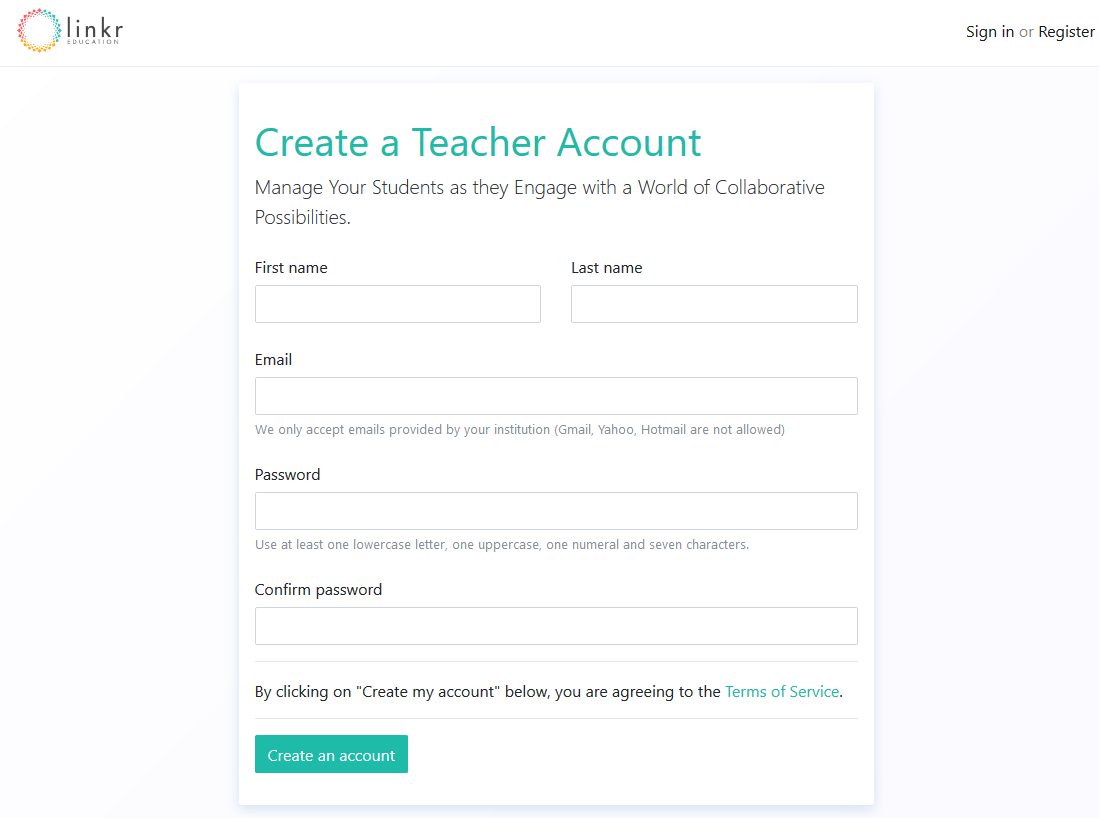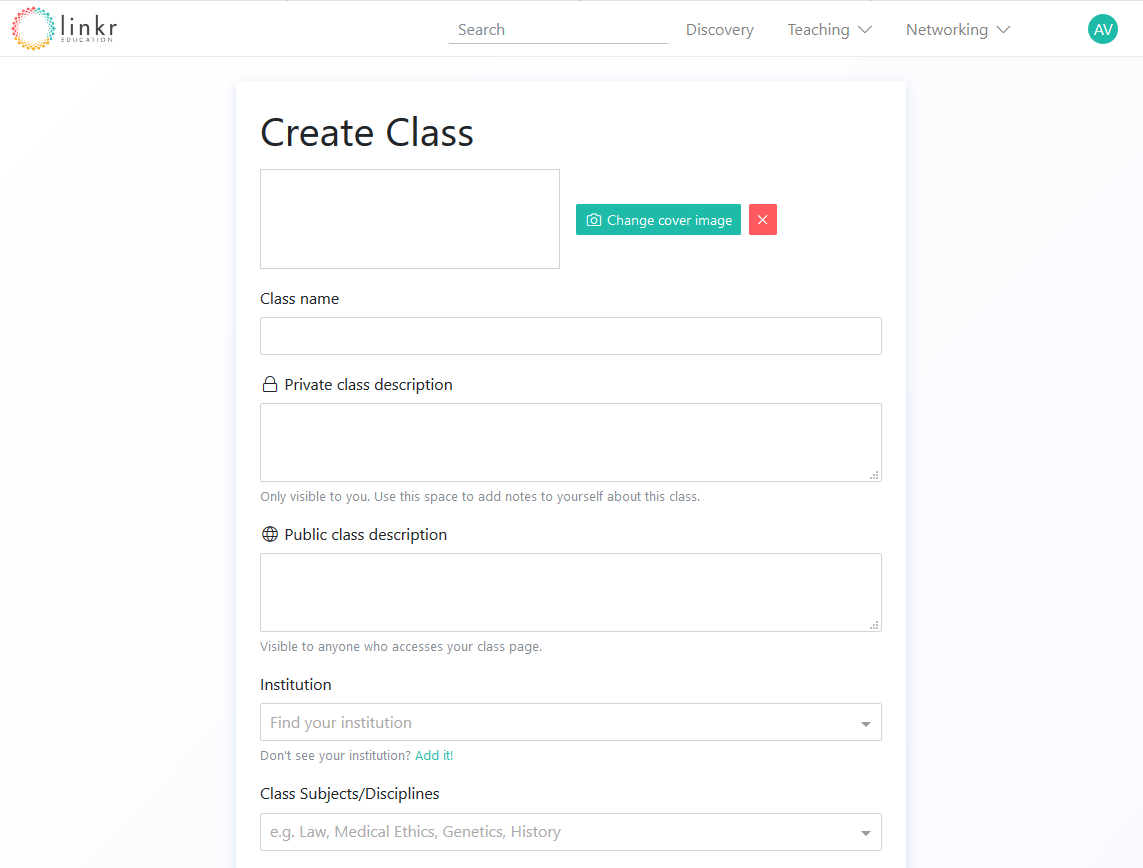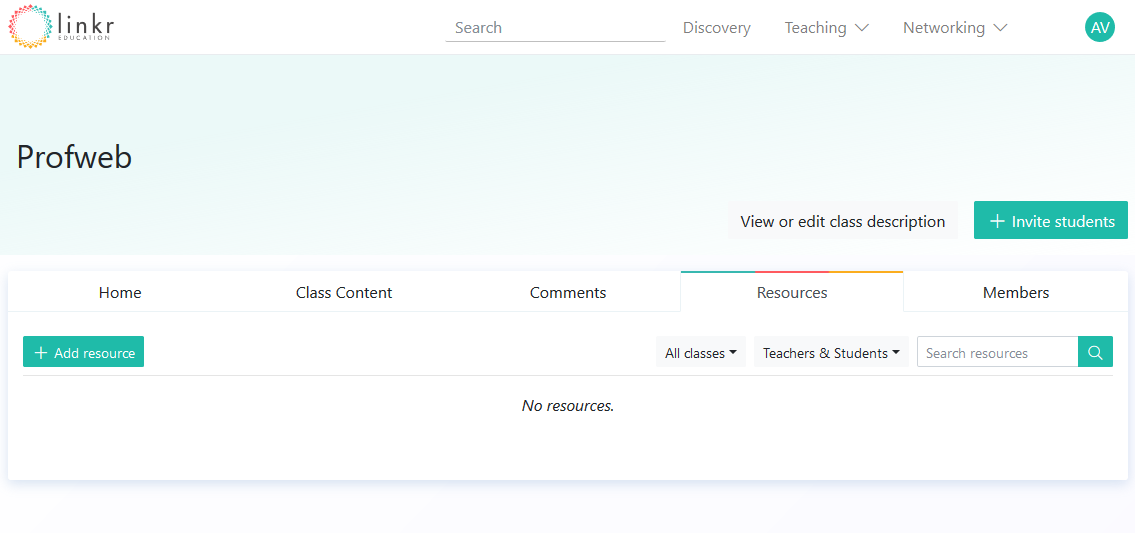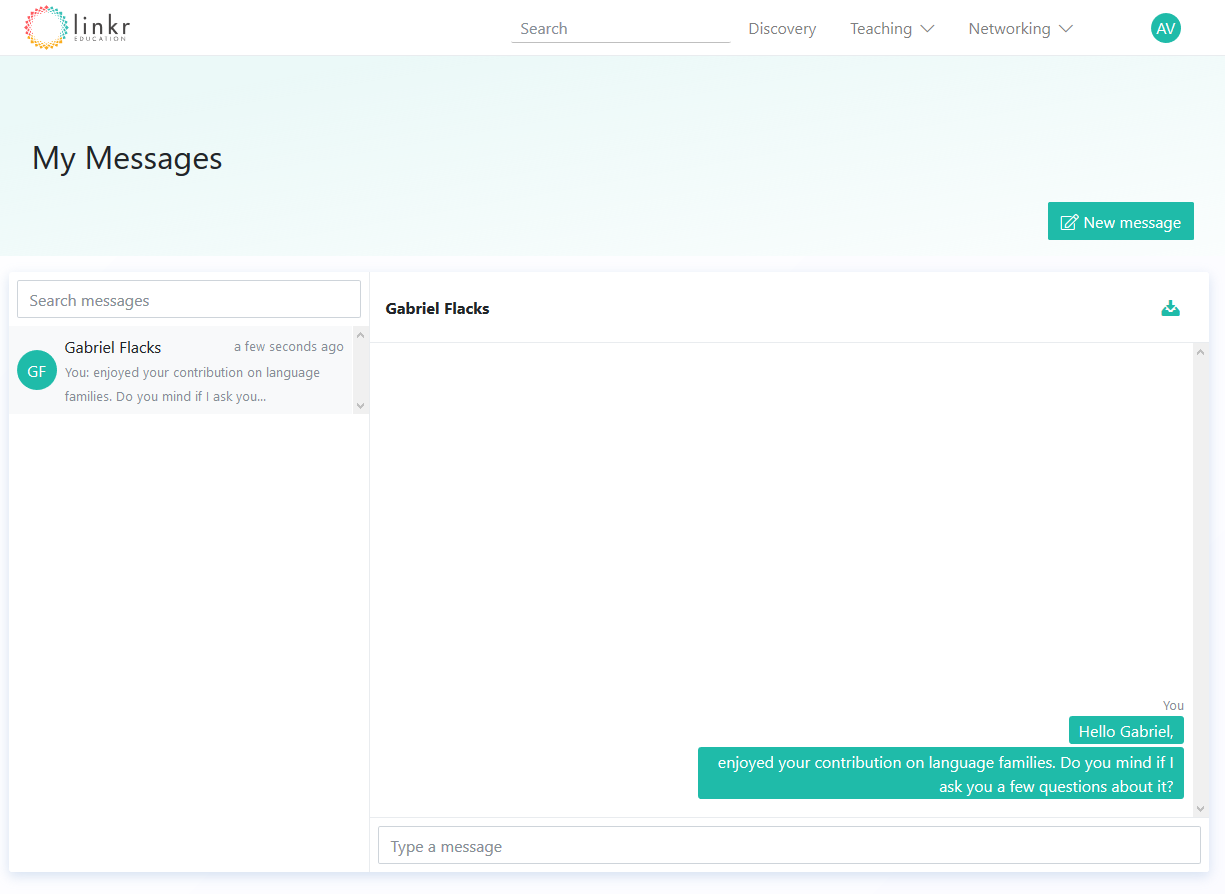linkr: Student Interaction and Collaboration without Boundaries
Active learning, distance learning, and personalized learning (whether or not integrated in a flipped or blended learning approach) are pedagogical methods that need little to no introduction. The opportunities and benefits they offer have been documented in many a Profweb article or real-life story over the years. linkr, a teaching platform and global network of teachers and students, takes these concepts to the next level while making them easy for teachers to integrate into curricula. Cofounded by Humanities teacher Gabriel Flacks (Champlain College St-Lambert) and partners Gregory Mattei, Antoine Ricquebourg and Pierre-Olivier Bonin, linkr harnesses the power of technology to remove the physical boundaries between students and teachers around the world.
The Power of Networking
linkr’s mission is to make the learning experience more interactive, interdisciplinary and even international. It accomplishes this self-imposed tall order by connecting teachers and their students with an online platform that offers users access to what can be called an educational network. While teachers come to the platform with different needs and expectations of their students, the level of flexibility linkr offers accommodates this variety and in fact offers a space to further nearly any teaching and learning objectives. Furthermore, the openness and features for online publishing and collaboration give students and teachers the opportunity to easily access unique teaching and learning opportunities:
- Creating a virtual classroom to manage students’ writing and peer reviewing
- Increasing authenticity of writing tasks by giving your students access to an interactive audience
- Increasing critical thinking, digital literacy and web etiquette skills by encouraging students to engage with and react to content written by others
- Setting up a more formal collaboration with another teacher’s class, regardless of physical location, to build interactive assignments for active learning and blended learning
- Personalizing students’ experiences by empowering their own explorations of the value of course content through networking and project-based learning
The intuitive interface enables teachers to easily set up a free account, invite students, and reach out to fellow educators to start the linkr experience.
Setting Up
To join linkr as a teacher, sign up with an institutional email address- that’s it! Creating an account is free and includes adding and managing an unlimited number of students. In the near future, a paid subscription will offer premium features such as online grading and video chat.

Set up a free teacher account using your institutional email address.
Once you have set up your account, from the Teaching tab, you can add one or more classes. Creating a class allows you to invite your students using a shareable link. In turn, this makes it possible to easily track, follow up and comment on student contributions. The class menu also allows the teacher to share content and assignment instructions as well as resources such as embedded videos and PDFs. Another tab organizes comments made by students, enabling assignments to not only ask students to submit original content, but also to contribute substantial feedback to other students in the linkr network

From the Teaching tab, you can add one or more classes in a similar fashion to other learning management platforms.

From the Class menu, you can add content, manage students and keep track of their work.
When you or your students add new content, it can be published using different privacy parameters:
- Public – this makes the text available online for anyone to see, but only registered linkr users can comment
- Linkr network – the contribution can only be found by users signed in to linkr
- Selected classes only – only the members (students and teacher) of the selected class(es) can see and comment on the text-
- Share only with my class– this means only members of the students’ class can see and comment on the text
- Private – the contribution is not visible on the linkr network, but can be consulted and commented on by the teacher and student

When adding new content, users have complete control over whom they share their text with.
Exploring Content
From the Discovery tab, users can explore content published by others using the “public” or “linkr network” setting. Clicking on the article leads to the full text, and also allows commenting or liking the contribution by clicking on the heart-shaped button. This is an informal and unstructured way for students to connect with others around academic work, exploring topics they are interested in, and expressing themselves in an authentic and familiar manner. Users simply browse the content or use the search field to find specific topics. By commenting on content or dialoguing in threaded commentary or by instant messaging with other linkr users, each student personalizes their course experience as they contribute to one another’s work around shared interests.

The Discovery tab allows students to browse or search publicly shared contributions, read, like and comment on them.
Networking
Contributing comments, reading others’ contributions and commenting on them already allows for a good deal of interaction, but teachers can forge even deeper cross-course relationships via the Networking tab. The messaging function allows any users to communicate with one or more other users. A teacher can reach out to one or more students, or a colleague. Students can easily get in touch with the author of an article they take an interest in, or coordinate with students they choose to collaborate with on a text or assignment. The My Messages tab regroups all conversations.

The linkr platform comes with an integrated messaging function to easily contact other users individually or in groups.
Another function available from the Networking tab is reserved to teachers, and allows finding collaborators by writing or answering a collaboration request. This is the networked collaboration power core of the platform. Once two or more teachers agree to link their courses, students from both groups can efficiently communicate and navigate content. Teachers can share resources across classes and classes are given opportunities to forge new experiences through this linked relationship.

Teachers can post requests to collaborate with other educators and link their classes.
It is important to note that linkr acts merely as an enabler, leaving the teachers involved complete freedom over the shape of their collaboration and over all aspects of pedagogy. For instance, students could simply be asked to comment on the work from their peers in the other group, so teachers can see what interests are presenting themselves as common in the class. Small groups could be linked to work on one assignment together or a collaboration could take the shape of a term-long virtual team-teaching effort where both teachers develop their syllabus together. The key word here is flexibility, meaning the possibilities are endless.
Unlock the Power of Networking
linkr has already attracted hundreds of teachers and thousands of students from more than 20 countries in its short time online. At the time of writing, several teachers in the Quebec college network as well as higher-education institutions in the United States have posted a collaboration request for the Fall 2018 session. If you want to break through the physical boundaries of your classroom or college, and collaborate with teachers and students across the province, the country, or the world, linkr gives you that opportunity.

